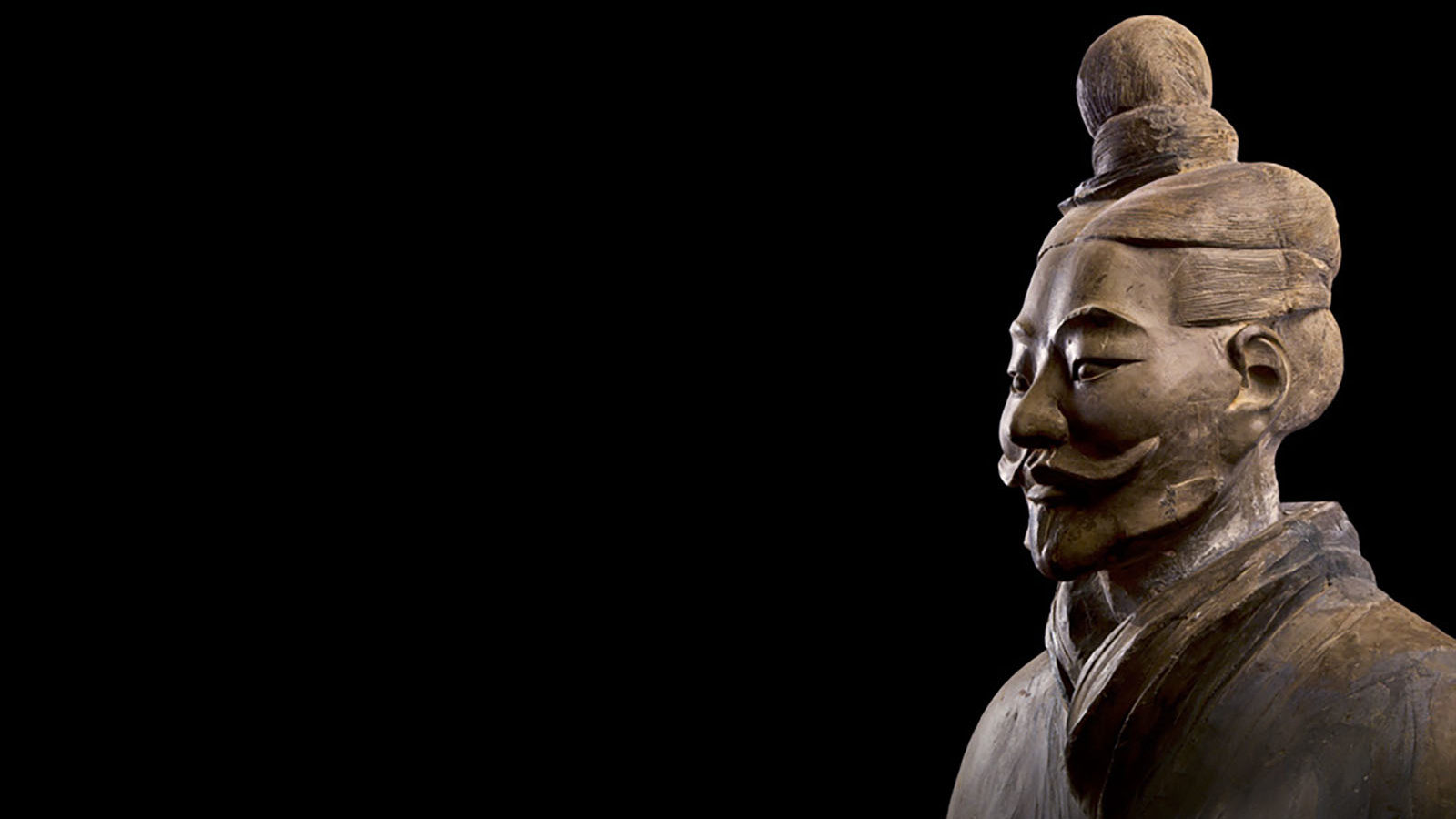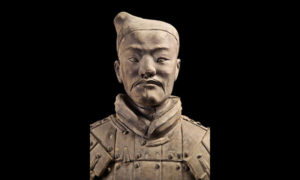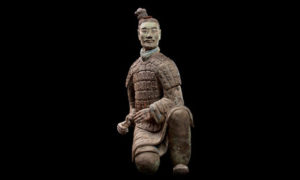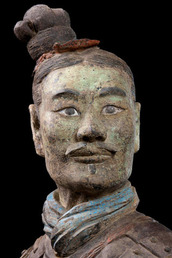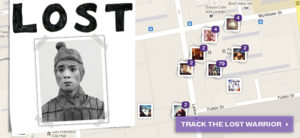Figure rejoins troop in time for big exhibition.
SAN FRANCISCO, Feb 20, 2013—The Asian Art Museum today announced that its “lost” Chinese terracotta warrior, reported missing and wandering the Bay Area, has been found. Moses Carbins, an erstwhile San Francisco homeless man, discovered the roaming warrior at United Nations Plaza’s Heart of the City Farmers Market on Wednesday, Feb. 20, and personally led the warrior through the museum’s front doors at 200 Larkin Street.
On Jan. 23, the museum announced that the terracotta figure had become separated from his cohorts en route to San Francisco. He and his seven fellow warriors, along with two life-size horses and more than 100 other ancient artifacts, are scheduled to appear in the museum’s special exhibition, China’s Terracotta Warriors: The First Emperor’s Legacy. (Feb. 22–May 27). Museum officials sought the public’s help locating and directing the lost warrior to the museum before the exhibition opens this Friday.
“I know our city well, and it’s not every day that you see a 2,112-year-old, mud-colored figure roaming the streets,” said Carbins. “In fact, until recently, I lived on the streets—actually not far from the museum. I had no real home for more than twenty years. So I know a little something about helping people find their way off the streets.”
Carbins is the subject of Moses, a documentary film currently in production by Fran Guijarro Hernandez, a San Francisco filmmaker and instructor at Academy of Art University. The film tells the fascinating story of one man’s on-again, off-again, on again recovery from living on the streets of San Francisco. More information about the film can be found at Mosesthemovie.org.
“On behalf of the Asian Art Museum and the entire city, I thank Moses Carbins for escorting our lost warrior to the museum this morning,” said Jay Xu, director of the Asian Art Museum. “Like his biblical namesake, Moses has delivered our warrior, allowing him to rejoin his troop on view here in our galleries—just in time to welcome our first visitors. Nearly 23,000 people, including more than 14,000 school children, have already reserved their tickets to see the exhibition.”
To help with the search for the warrior, the museum created a special interactive website, www.asianart.org/lostwarrior, to track his movements. Over the past few days tipsters uploaded photos of warrior sightings at the de Young Museum, California Academy of Sciences, Pier 39, Contemporary Jewish Museum, SFMOMA, Yerba Buena Center for the Arts, M.Y. China at Westfield Centre, Hotel Rex, Hotel Carlton, and San Francisco Symphony, among other locations. He was also photographed at Union Square with a gaggle of Cathay Pacific flight attendants, and strolling Dolores Park in the Mission District.

